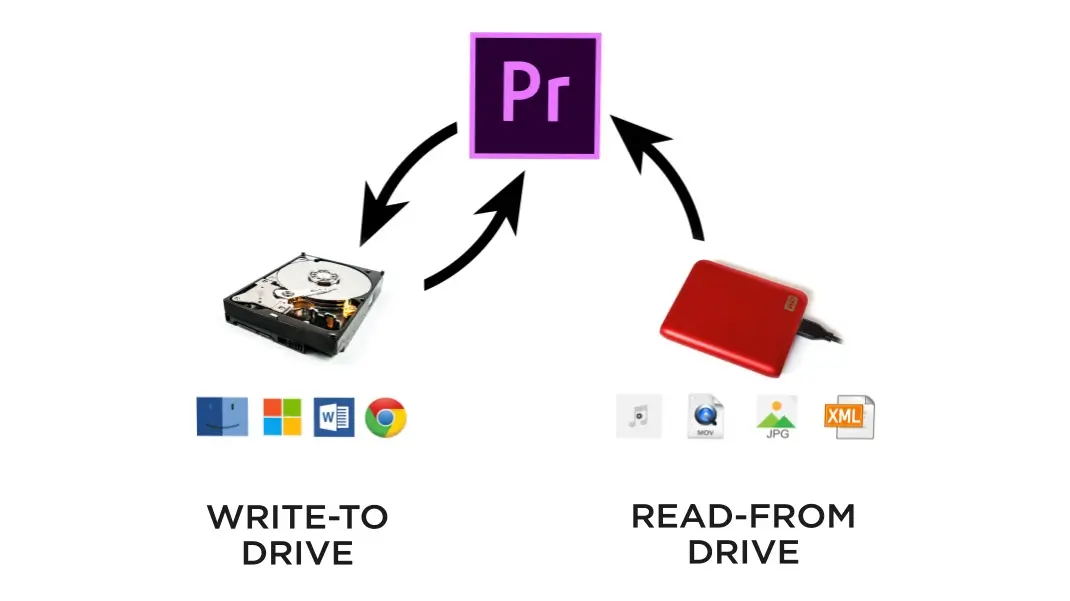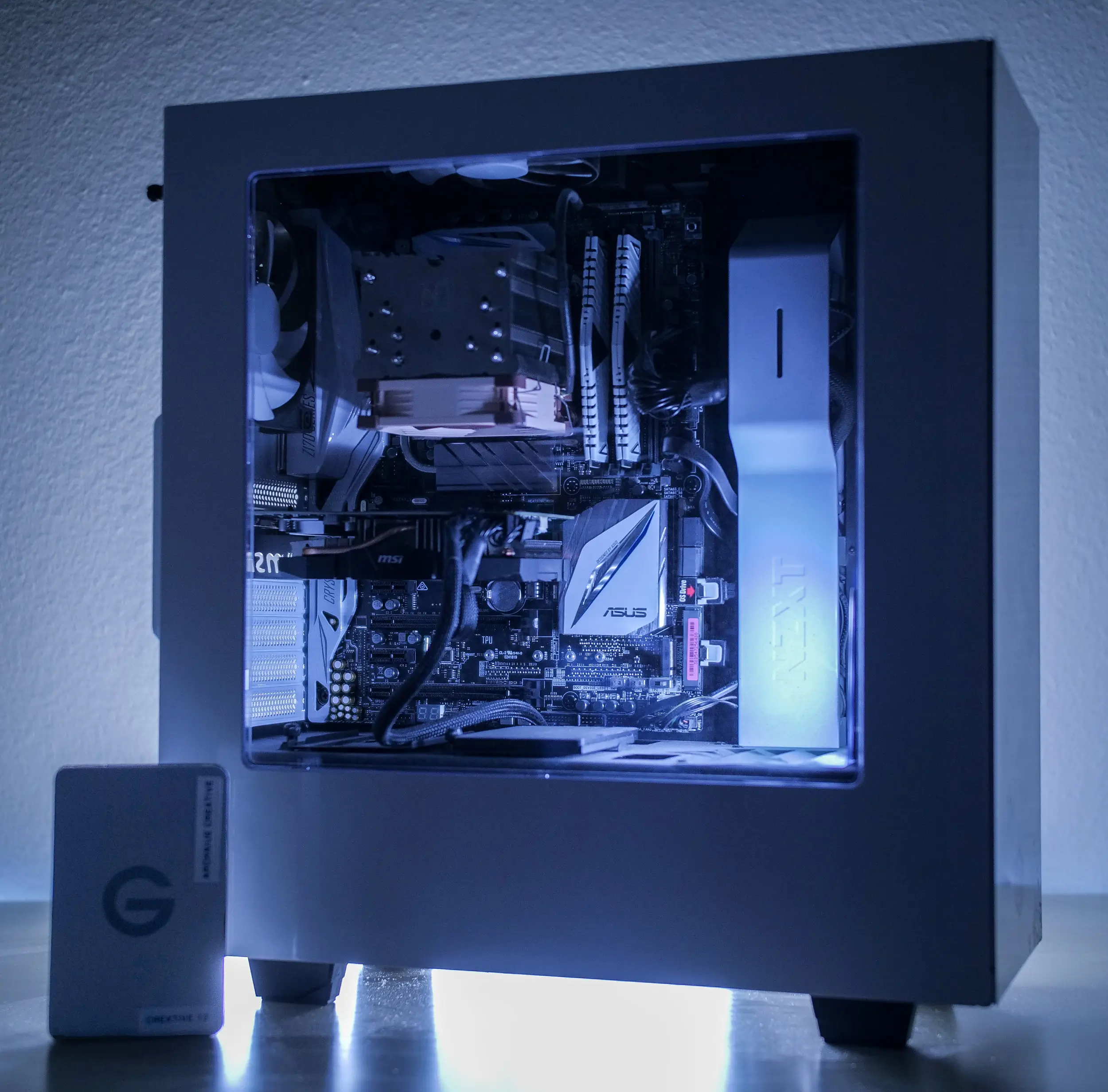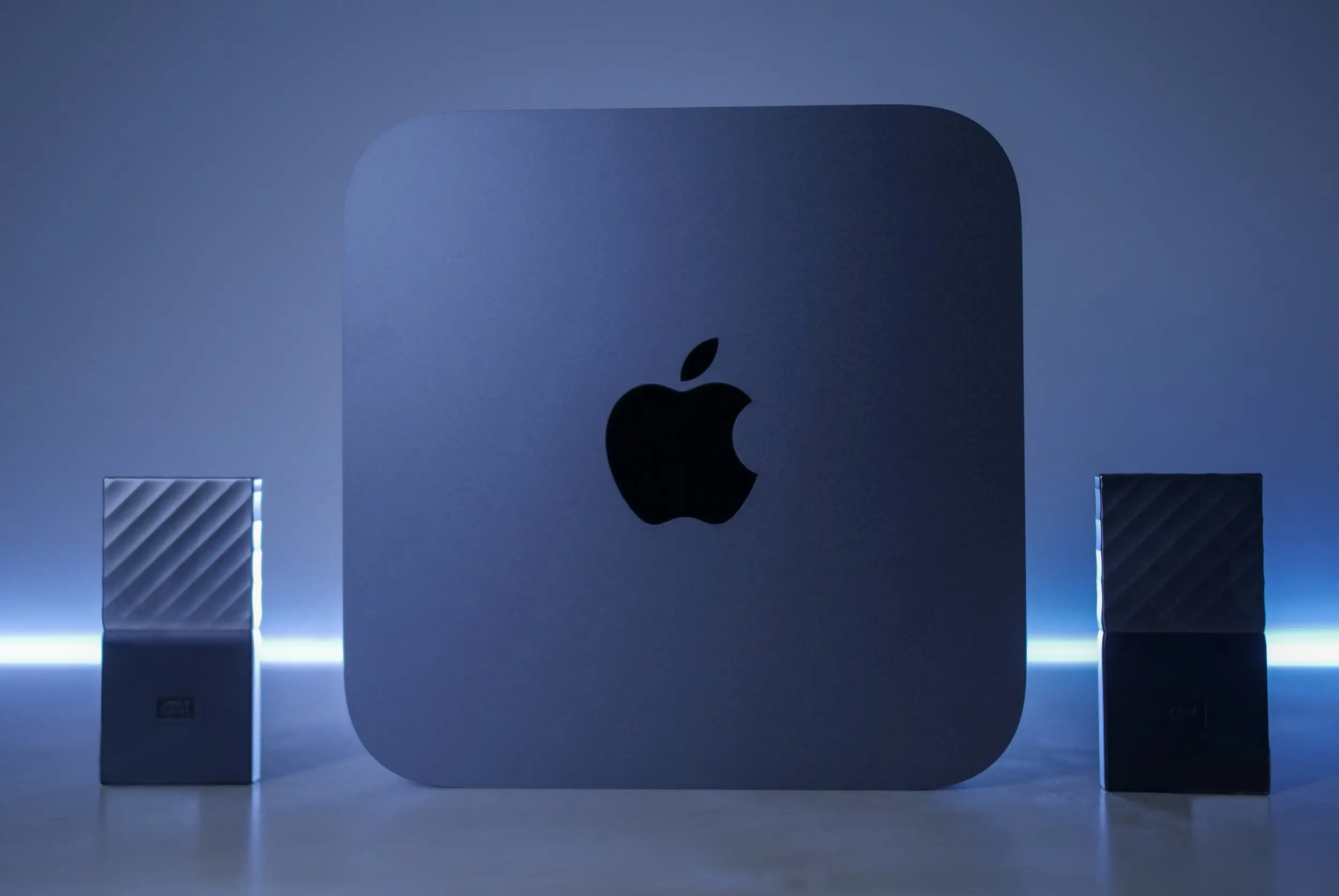

Is Hard Drive Delegation Limiting Your Editing Speed?
March 27, 2019
–
–
–
–
Not a computer expert? That’s okay! Learn a quick and easy trick to optimizing the speed of your current workstation.
Did you know your editing speed is largely influenced by how your hard drives are delegated?
Especially with systems running on mechanical drives, the location of where media is stored vs where your operating system and applications live can greatly impact the speed at which your machine can perform operations. Given the need to play back and manipulate large video files in realtime, editing is particularly taxing on computers. So the impact of hard drive delegation can hinder a workstation incredibly quickly.

G-Technology USB Hard Drive and Samsung T5 Portable SSD
In-house we’ve adopted the mentality of designating a “read-from” hard drive, as well as a “write-to” hard drive. It’s important that these are two physically separate drives in order to gain the most efficient usage of each:
The thought process behind splitting up the task of reading media from one drive and writing media to a different drive is that each drive is able to run at a more efficient speed – as opposed to one hard drive completing both functions.
A decent editing rig can play media on a timeline faster than most drives can deliver the data; with that in mind, we definitely do not want to split the drive’s work between reading and writing.
In this model, the “read-from” drive is where all our media is stored. We have external hard drives with all of our media, which Premiere is “reading from.” We then save our Project Files and peripheral auto-saves, preview files, and media cache on our internal hard drive, which we delegate as our “write-to” space. This ensures that our media drives don’t get their bandwidth allocated to preview files, auto-saves, etc; when they should be supplying media to Premiere.

Here’s a breakdown of this drive delegation:
Read-from drive
- Typically external hard drive
- Footage files
- Audio files
- Graphics files
- Image files
Write-to drive
- Typically internal hard drive
- Operating System
- Programs
- Auto-saves
- Preview files
If you really wanted to optimize the drives in your system, you could implement a scratch disk as a dedicated landing spot for peaks and reference files. This will further distribute the load between the drives. However, you’ll of course need either more internal drives on a desktop computer, or plug in more external hard drives anytime you’d like to work on a project, which may not be ideal if you ever edit remotely.

If working from multiple drives isn’t an issue, below is our ideal drive configuration:
Primary Drive
- Internal hard drive
- Operating System
- Programs
SEcondary Drive
- Either internal or external hard drive
- Reading project files
tertiary Drive
- Either internal or external hard drive
- Scratch disk
- Media cache, peaks, and previews
quaternary Drive
- External hard drive
- Reading media
Below are some examples of how we’ve set up a few of our in-house machines. Based on our editors’ needs and workflow, we have a lot of diversity in our machines. This has enabled us to come up with varying solutions for a few different platforms:
5k iMac

These ones can be tough since there’s no easy way inside to fiddle with the internal drives, and just a few external ports. Here’s how we’re running them currently:
- OS, Premiere or FCPX, and project file stored on the internal drive.
- All project media stored on an external hard drive or SSD
- At least one external drive used as a Scratch Disk
PC

Options, options, and more options; the sky is the limit with desktop PCs (both in drive configuration and budget :D). We opted for 3 internal drives with a big emphasis on solid state storage:
- OS and Premiere on an internal SSD
- Project file stored on an internal 7200rpm mechanical drive
- All project media stored on an external hard drive or SSD
- Additional M.2 SSD for use as a scratch disk
Mac Mini 2018

This is a cool one. Basically, the new Mac Mini has a good processor and a lot of Thunderbolt 3 ports. It almost becomes an a la carte machine where you buy a base and add what you need via Thunderbolt 3 ports:
- OS, Premiere or FCPX, and project file on the internal drive
- Project file stored on external SSD (via Thunderbolt3)
- All project media stored on an external hard drive or SSD
- External SSD (via Thunderbolt 3) used as a scratch disk
We’re still experimenting with varying drive configurations, especially as SSDs come down in price and increase in popularity.
Admittedly, we’re not computer experts, but working each of our drives in only one direction of operations has sped up our machines, and hopefully has contributed to the long lifespan we’ve seen from all of our external and internal hard drives.
Have any questions about this? Ask us

